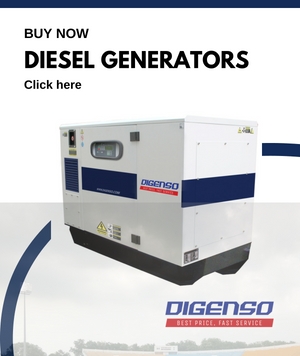- 98 Nguyen Cong Tru Nguyen Thai Binh Ward, District 1, Ho Chi Minh City
- [email protected]
- (+84) 0287 1069 898
LOW LOAD PROFILE. HOW DOES IT NEGATIVELY AFFECT A GENERATOR SET?
What are the consequences of operating a generator in low load mode? What damage can the equipment cause? What corrective measures should we carry out?
CONSEQUENCES OF OPERATING UNINTERRUPTEDLY IN LOW LOAD MODE
Operating uninterruptedly in low load mode can lead to higher oil consumption and consequently to a manifestly greater deposit of carbonized oil or oil residue in the engine, as well as in the suction and exhaust system.
The emergence and persistence of residue has a negative impact on the functional behaviour and on the lifetime of the engine. As a result, maintenance tasks tend to increase.
In addition, when an engine is operating in low load mode, it cools down, which means that the fuel is only partially burned, which can in turn produce a white smoke with high hydrocarbon emissions.
Due to the low fuel temperature, the percentage of unburned fuel in the oil increases. These problems are due to the fact that the piston rings, the piston itself and the cylinder do not dilate enough to ensure a good seal and as a result the oil rises and is expelled through the exhaust valves. This means that the diesel oil passes into the crankcase, degrading the quality and the properties of the lubricant.
Frequent and continued use of generator sets with power loads of less than 30% of the maximum power value can lead to the following failures over time:
-
Increase of exhaust smoke.
-
The presence of traces of fuel in the engine oil.
-
Excessive wear of the turbocharger.
-
Oil leaks in the body of the turbocharger.
-
Increased pressure in the gearbox and the crankcase (Blowby).
-
Excessive deposit of carbon residue on the surfaces of the valves, valve seats, pistons and the exhaust manifold.
-
Hardening of the surfaces of the cylinder liners.
If such a system exists, lower efficiency of the exhaust gas treatment system (ATS) which may activate the forced regeneration cycle of the DPF.
RECOMMENDED CORRECTIVE MEASURES
To avoid any incident and ensure the correct use of the generator set, HIMOINSA recommends that you avoid operating it uninterruptedly in low load mode, or that you reduce such usage to minimum periods of time. The use of generator sets in low load conditions for more than 15 minutes should be avoided.
During the weekly operation tests, the no-load operating time should be limited to a maximum of 15 minutes, until the battery charge values have returned to normal.
The generator sets should be operated once a year for several hours at full load to clean the engine, in other words, to eliminate the carbonized oil deposits in the engine and exhaust system. This may require a load bank. The load should be increased during the course of the four hours of the operation, from zero to full load.
If the failures mentioned above appear, along with long-term use of the generator with little energy load, operate the power generator at full load, if possible using a Resistive Load Bank before replacing any component.
HIMOINSA designs, manufactures and distributes power generation equipment. Its experience of more than 35 years and its international presence makes it one of the leading companies in the power generation industry. Its mission is not only to manufacture generator sets but to share its know-how, and to offer advice on how to use and operate the equipment correctly. To do this, it has technical professionals in each market. #Closetothemarket
Written by JORGE TORRES VERA | HIMOINSA AFTER-SALES & TECHNICAL SERVICE DIRECTOR
He has more than 20 years of experience in the power generation sector and for five years he has worked as the head of the After Sales and Technical Service area at HIMOINSA. It works on the development of efficient solutions to extend the generator sets life as well as structuring a global service network capable of supporting all the markets in which HIMOINSA markets its products.
(Source: Himoinsa.com)



